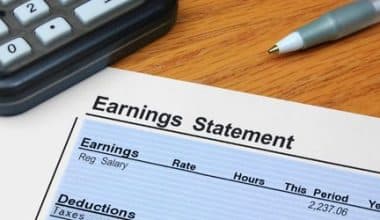It’s essential to study and understand how your 401(k) plan and the matching program work, as you’re unlikely to be completely vested immediately. However, employees may lose amounts that are not vested when they are paid their account balance. But how do you get to know all of these beforehand? This post talks about what 100 percent vested really means in 401k & how to know if it is vested.
What Does Vested Mean In 401k?
Employers generally establish vesting plans that gradually transfer ownership over a specified length of time. Vesting in pension and stock-based compensation programs refers to the percentage of ownership an employee has in them. A fully-vested employee owns the employer’s contributions to his or her retirement account and is in permission to exercise all stock options is giving to him or her. If an employee leaves a firm before attaining complete vesting; they forfeit the portion of employer contributions that they have not yet received under the vesting schedule.
Vesting schedules are frequently useful to award a percentage of an employer’s contribution; based on their length of service with the organization. Understanding how vesting works enables businesses and employees to establish realistic expectations; make more informed choices regarding business objectives and employment tenure.
How Vesting Works
Employer-sponsored retirement plans typically contain a matching contribution of between 3% and 6% of an employee’s salary. Along with the employee’s contributions, this money is in deposit in a retirement plan, such as a 401(k).
Employee contributions are immediately in a vest, which means they retain total ownership of the money they contribute to their retirement plan. However, employer contributions are frequently subject to a vesting schedule; that gradually transfers ownership of the employer contributions to the employee.
When 100% Vesting Is In Demand
All employees must be fully in a vest in the plan by the moment they hit normal retirement age, or the plan is off. Lastly, If you have any concerns regarding your vesting, you should contact your company or human resources department.
What Does 100 Percent Vested Mean In 401k?
“401(k) vesting is the percentage of matching contributions that employees are eligible to keep depending on an employer-determined vesting timeline,” Egler Fred.
Financial planners make a big deal about urging youth to contribute to company-sponsored retirement accounts even more so if your employer matches a portion of your contribution.
Vesting schedules are classified into two types: cliff and graded. Let’s look at them one after another.
#1. Graded Vesting
Gradually, you become eligible for a greater percentage of your employer match through graded vesting. A typical grading schedule appears as follows: after one year of employment, you are entitled to 0%; after two years, 20%; three years, 40%; four years, 60%; five years, 80%; and after six years, 100%.
“Your vesting timeline is based on the type of money deposited, not on the actual amount deposited,” Egler explains.
#2. Cliff Vesting
With cliff vesting, “you are initially entitled to almost none of your match, but after a set number of years, you are entitled to 100% of your match,” Egler explains. For instance, you may be 0% in a vest for two years before becoming 100% vested. Businesses may give any timetable and percentages they like, as long as employees are fully vested after six years of service. That is an IRS obligation.
#3. Immediate Vesting
Although less common, employers can also choose immediate vesting. From the start, employees have access to their employer’s contributions.
What Events Will Result In My Acquiring 100 Percent Vested Status In 401k?
Three significant events will immediately vest you 100 percent regardless of your years of service:
- You terminate your employer’s pension plan.
- A participant reaches the plan’s stipulated Normal Retirement Age. Normal Retirement Age cannot exceed 65 years of age or the fifth anniversary of the participant’s enrollment in the plan.
- If your plan contains an Early Retirement Age provision, a participant who reaches that age becomes fully vested.
Employers frequently elect to fully vest employees in the event of death or incapacity but are not obligated to do so.
Are There Any Contributions That Are Not Investable?
Yes. Employer contributions made as a typical safe harbor contribution regardless of whether they are nonelective or matching must always be fully in a vest immediately. Employee deferrals, Roth 401k contributions, rollover contributions, and employee after-tax contributions must all be immediately fully 100 vested.
Only contributions made by non-safe harbor employers may be subject to a vesting schedule.
What Kinds Of Vesting Schedules Are Available?
The Internal Revenue Code (IRC) specifies two vesting schedules for 401(k) and profit-sharing plans: three-year cliff and two- to six-year graded vesting. Participants who are credited with three years of vesting service (401k) are 100 percent vested in the employer contributions under a three-year cliff vesting plan but are 0 percent vested at all preceding times. Gradually vesting participants in employer contributions over a two- to six-year period increases their ownership of employer contributions with each passing year.
How Is 401k Vested By 100 Percent Calculated?
When you enroll in a 401k plan, both you and your employer make pre-determined contributions to your account each paid month. Your contributions to your 401k are always 100 percent yours, but you must be completely vested to claim all of your employer’s contributions. Vesting normally takes between three and six years, depending on the terms of your employer’s plan.
What Does Fully Vested Mean In 401k?
Vesting is a phrase useful in retirement that refers to the ownership of your 401(k) plan (k). It establishes the maximum percentage of your 401(k) balance that you can withdraw when you leave your employment. While the contributions to your 401(k) are yours, your employer’s match may be different.
While the money you pay directly to your 401(k) is yours and will follow you if you choose to quit your position, the rules of your employer’s match may be slightly different. Numerous employers establish vesting schedules for their contributions to their employees’ 401(k) plans.
Many firms’ policies require you to be completely in a vest in your 401(k) within three to seven years (k). Certain employers may allow you to vest a portion of that sum, which increases each year until you reach the maximum.
Each company has a unique vesting policy that governs when you acquire complete ownership of the employer’s contribution. The vesting time may be between three and six years, and the employer may elect between graded vesting and cliff vesting. If you leave before the employer match is fully in a vest; you will forfeit a portion or all of the company contribution.
What Is The Purpose Of Employers’ Vesting Policies?
One reason employers adopt vesting rules is to promote employee retention. Many individuals will remain in their positions until their 401(k)s are fully in a vest; in order to maximize their financial benefit. This may be a factor for employees when it comes time to hunt for a new job.
On that topic, it is critical to evaluate the financial implications of new employment at all times. If your income is likely to increase dramatically, you may be willing to take a blow to your 401(k) balance, particularly if you have been with the employer for less than a year or two. However, if you are close to reaching full vested status in your 401(k), it may be more beneficial to wait a few months or even a year before transferring employment to allow your 401(k) to reach full vested status.
Contribution Of Employees vs. Contribution Of Employers
Contributions to a 401(k) plan are fully vested in the employee, and the funds remain theirs even if the person leaves the firm. If you’ve made only one contribution to your 401(k) at the time you decide to leave, you can either roll it over to an IRA or cash it out in one lump sum. If you choose to cash out early, however, you will be subject to taxes and early withdrawal penalties.
In comparison, unless your employer offers rapid vesting, you do not immediately own the employer’s match. Immediate vesting happens when an employer utilizes a safe harbor match, which entitles the employee to 100% of the employer’s 401(k) contributions (k). However, the standard employer’s match is subject to a vesting schedule, and you must wait until the required vesting period has passed; before receiving full access to the employer’s match.
Vesting Schedules Of Various Types
When establishing an employer match, the employer may elect between the following vesting options:
#1. Graded Vesting
Graded vesting means that a certain percentage of the employer’s contribution vests each year for a specified period until it reaches 100% vesting. Depending on your tenure with the company; you may be eligible to retain a portion of the employer match in your 401(k) (k). Remaining with your employment for a few more years could result in an additional few thousand dollars in retirement savings. The following is an example of a typical graded vesting schedule.
- First Year – 0%
- Second Year – 20%
- Third Year – 40%
- Fourth Year – 60%
- Fifth Year – 80%
- Sixth Year – 100%
If your employer follows this graded vesting schedule, you will own 100% of the employer’s match after working for the company for at least six years. If you remain until the fifth year, you will receive 80% of your employer’s match. However, if you resign within the first year, you will forfeit your employer’s entire 401(k) contribution (k).
#2. Cliff Vesting
Unlike graduated vesting, cliff vesting occurs abruptly. This means that you may have 0% vesting in your second year with the employer and 100% vesting in your third year.
Employers who elect this method of vesting may select a vesting period of up to three years. This implies that if you quit your employment after three years, you can keep all of your employer’s 401(k) contributions (k). If you leave the company before the required vesting term, you will forfeit the whole employer contribution.
#3. Immediate Vesting
The simplest vesting schedule is immediate vesting. Employees immediately own 100% of donations.
Additional Common Vesting Types
Apart from 401(k) plans, employers may also offer other types of remuneration with vesting schedules, such as pensions and stock options. These typically work differently than vested contributions, but both pensions and stock options can vest instantly or according to a cliff or graduated vesting plan.
#1. Stock Option Vesting
Employee stock options entitle them to purchase company stock at a predetermined price and date in the future, regardless of the stock’s present value. The theory is that the stock price will increase between the time an employee is useful and their stock options vest. The employee can then purchase the shares and profit from them.
#2. Vesting Of Pensions
Vesting schedules govern when an employee is entitled to collect their full benefit from a pension.
Who Is In Charge Of 401(k) Vesting?
While businesses have the freedom to design the majority of their 401(k) plans, the Employee Retirement Income Security Act of 1974 (ERISA) establishes some minimal rules that are in enforcement by the United States Department of Labor. Employees must receive the most critical plan information in writing, and vesting schedules would qualify as critical plan information under ERISA.
What Is The Vesting Schedule?
A vesting schedule outlines the steps required for an employee to become fully vested. These vesting standards inform employees of the time required to become completely vested in their 401(k) plan. If employees gradually increase their 401(k) participation rather than becoming completely vested all at once, the vesting schedule will reflect this incremental increase in participation.
Going to the next section, we will be looking at how to know if you are fully vested in your 401k.
How Do I Know If I Am Fully Vested In My 401k?
When you join a 401(k), your financial advisor may advise you to take advantage of your employer’s “free money.” This is the employer match that a business makes available to its employees up to a specified amount of their contribution. Typically, also know that an employer will match up to 100% vested of your 401k contributions (k). However, there is a caveat: you do not fully own your employer’s match until you have reached 100% vesting.
Am I Completely In A Vest In My 401(k) Plans?
If you have met the employer’s time requirements, you are fully in a vest and own 100% of the employer’s contribution. Certain employers provide instant vesting, while others require up to five years to become fully vested. Consult the summary plan description of the employer to ascertain the company’s vesting schedule.
Can I Access My 401(k) Funds If I Have Completed My Vested Period?
Just know that if you are completely vested, you own 100% of the assets in your 401k; including the company contribution. This indicates that you have complied with your employer’s vesting period requirements. Even if you quit, resign, or change jobs, the corporation cannot reclaim its contribution.
However, becoming fully vested does not imply that you can access the funds at any moment. You must pay income taxes on the withdrawal and an additional 10% penalty if you are under the age of 59 12. If, however, you are 55 years old when you leave your company and are fully in a vest, you may cash out without paying the 10% penalty; nevertheless, you must still record the distribution on your annual tax return.
What Happens If I Leave Before I Have Completed My Vested Period?
Depending on your employer’s vesting timeline, you may receive no match, a portion of the match, or the entire match. If your business has a graduated vesting schedule that grows by 20% each year beginning in the second year, you will need to remain with the company until the sixth year to become completely vested. Also know that if you leave in the fourth year, you will receive just 60% you vested of the company match in your 401k and would forfeit the remaining 40%.
If your employer follows a cliff vesting plan, you will need to wait a specified period before becoming fully vested. If you leave before the term expires, know that you will forfeit the entirety of your employer’s 401k vested plan match.
Occasionally, extending your stay by one or a few months or years can add thousands to your retirement savings. However, if you are transferring to a higher-paying job with the possibility of earning more than the unvested employer’s match, it may be worthwhile to forfeit the unvested sum. Lastly know that you can transfer your vested 401k to an IRA or a new 401(k) with your new company.
FAQ
Can I withdraw my vested balance?
When you resign, retire, or are terminated, you should be able to access your vested balance. You can extract those assets and reinvest them in a retirement account or you can bring them out, though there may be tax implications and other considerations to do so.
How do I know if my 401k is vested?
When you join a 401(k), your financial advisor may advise you to take advantage of your employer’s “free money.” This is the employer match that a business makes available to its employees up to a specified amount of their contribution. Typically, an employer will match up to 100% of your 401(k) contributions (k).
What happens to my 401k if I’m not vested?
Depending on your employer’s vesting timeline, you may receive no match, a portion of the match, or the entire match. If your business has a graduated vesting schedule that grows by 20% each year beginning in the second year, you will need to remain with the company until the sixth year to become completely vested.
How much of my vested balance can I withdraw?
Numerous 401(k) plans allow you to borrow against the plan’s balance. However, the highest limit you can borrow is $50,000 or half of your vested account balance, whichever is less.
Related Article
- 401k BENEFITS: 2023 401k Benefits for Employees and Employers(+Detailed Guide)
- 401k: Easy Guide for Beginners and Pros(+Best 15 Plans in 2023)
- Work Schedule: Steps to Schedule Employees Effectively
- Employee Schedule: Types & Best 5 Employee Work Schedule Apps
- 401(a): Understanding What a 401(a) Plan Is With Ease






